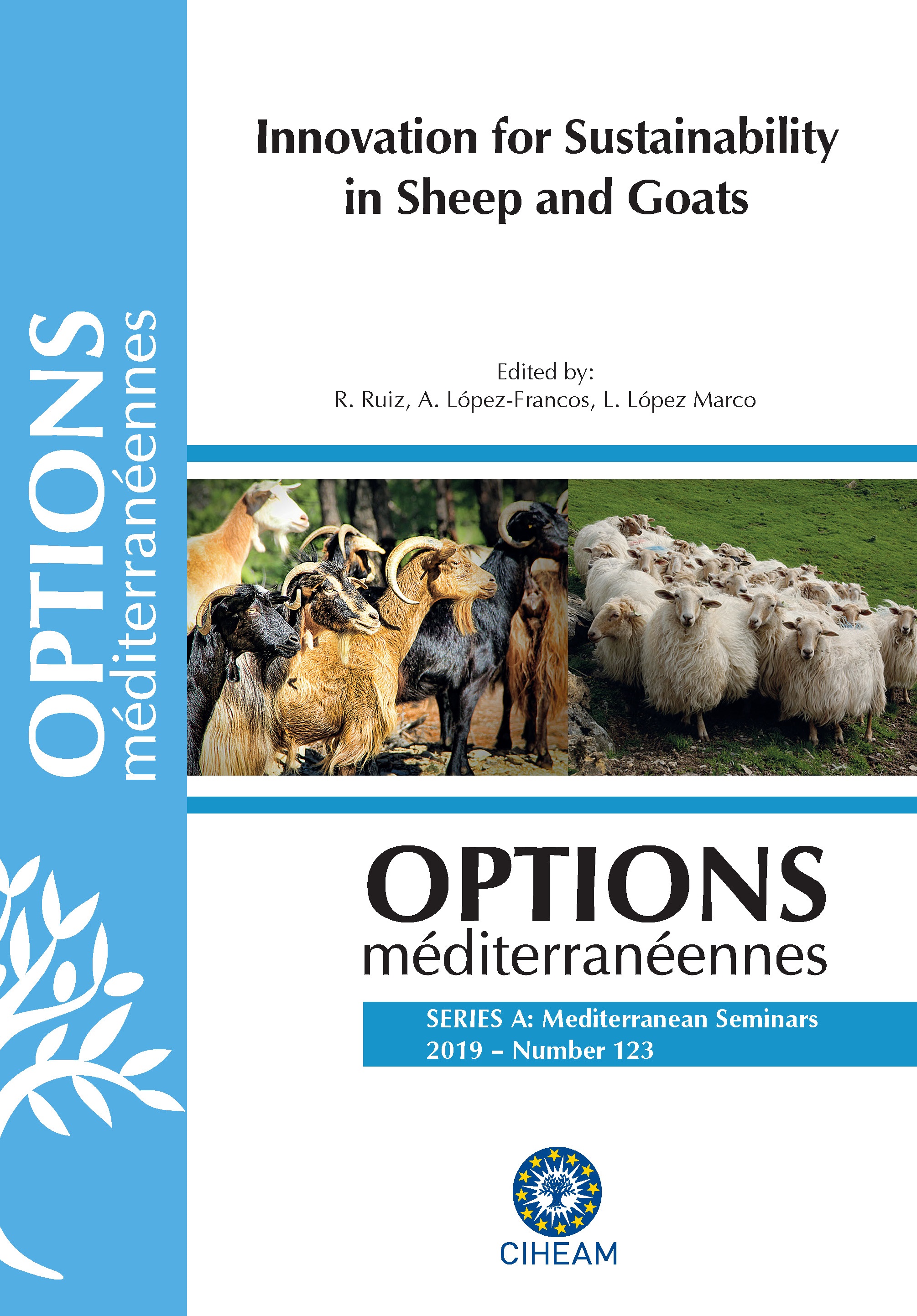| Article précédent | p. 415-418 | Article suivant |
Caractérisation de l’élevage caprin dans la région désertique de Bechar en Algérie
La wilaya de Bechar, située au sud-ouest algérien et caractérisée par un climat de type désertique, compte un effectif caprin de près de 64 000 têtes dont près de 52 000 chèvres. Dans l’objectif de caractériser l’élevage caprin dans cette région désertique, une enquête par questionnaire a été menée auprès de 100 éleveurs. Les résultats montrent que les caprins sont généralement élevés en association avec les ovins et y sont alimentés de la même manière, soit surtout basé sur du pâturage (85% des cas) avec complément à l’auge (surtout de l’orge, du son de blé et des déchets de dattes). Les pâturages sont constitués des ergs, regs, hamadas et lits d’oueds avec leurs végétations spécifiques. Ce type d’élevage constitue souvent (90% des cas) l’activité principale des éleveurs. Ces derniers sont généralement sans instructions et aucun n’a suivi de formation agricole. Les deux tiers des élevages sont orientés vers la production de viande (chevreaux à l’engrais). Deux tiers des élevages enregistrent deux chevrotages par an. Comme attendus, la majorité des éleveurs ne possèdent pas de terres agricoles. La taille du troupeau caprin varie souvent de 25 à 50 têtes, alors que les grand troupeaux (>100 têtes) sont rares (5%). Ces élevages sont constitués surtout (80%) de la race Arabia et logés généralement dans des écuries, gourbis ou Zriba. L’élevage caprin dans cette région désertique se distingue par son caractère extensif, orienté surtout vers la production de viande en utilisant surtout les parcours et en exploitant les sous-produits de la palmeraie.
The wilaya of Bechar, located in the south-west of Algeria and characterized by a climate of desert type, has a goat population of nearly 64000 head of which nearly 52000 goats. In order to characterize goat breeding in this desert region, a questionnaire survey was carried out among 100 breeders. The results show that goats are generally raised in association with sheep and are fed in the same way, mainly based on grazing (85% of the cases) with complement (especially barley, bran Wheat and date waste). Pastures consist of Ergs, Regs, Ha madas and wadis beds with their specific vegetation. This type of breeding often constitutes (90% of the cases) the main activity of the breeders. The latter are generally without instructions and none have undergone agricultural training. Two thirds of the farms are oriented towards the production of meat (goats to fattening). Two thirds of the farms record two periods of troughs per year. As expected, the majority of farmers do not own any agricultural land. The size of the goat herd often varies from 25 to 50 heads, whereas large flocks (> 100 heads) are rare (5%). These farms are mainly made up (80%) of the Arabia breed and generally housed in stables, gourbis or Zriba. Goat farming in this desert region is characterized by its extensive nature, mainly oriented towards the production of meat, using mainly the rangelands and exploiting the by-products of the palm grove.
- [ Afficher ]
- [ Télécharger ]
- [ Exporter la citation ]
Vous pouvez télécharger la citation au format :
- [ Imprimer ]
-
Mots-clés
ALGERIE, CHEVRE, ELEVAGE, PARCOURS, VIANDECiter cet article
Kadi S.A., Mouhous A., Djellal F., Gani F., Fiouane R. Caractérisation de l’élevage caprin dans la région désertique de Bechar en Algérie. In : Ruiz R. (ed.), López-Francos A. (ed.), López Marco L. (ed.). Innovation for sustainability in sheep and goats. Zaragoza : CIHEAM, 2019. p. 415-418. (Options Méditerranéennes : Série A. Séminaires Méditerranéens; n. 123). 2. Joint Seminar of the Subnetworks on Nutrition and on Production Systems of the FAO-CIHEAM Network for Research and Development in Sheep and Goats, 2017/10/03-05, Vitoria-Gasteiz (Spain). http://om.ciheam.org/om/pdf/a123/00007923.pdf



